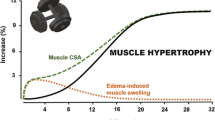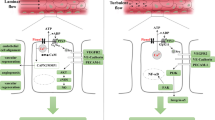Abstract
We have investigated the effect of high-intensity interval exercise (HIIT) on DOX-induced cardiotoxicity and the expression of mitochondrial biogenesis genes SIRT-1, PGC-1α, and NRF-2 as well as microRNA-149-5p in a rat model. Twenty-four male Wistar rats (250–270 g) were randomly divided in four groups (n = 6/each): control, HIIT, DOX, and HIIT+DOX. HIIT was performed on a treadmill as seven alternative intervals of high and low intensity trainings for 1 h a day for 6 weeks. After the last session of HIIT, DOX was injected i.p. to trained and time-matched control rats. After 3 days, the blood and heart samples were obtained. The plasma levels of myocardial creatine kinase (CK-MB) were measured using ELISA kit. The tissue homogenates were used to determine the expression of genes and microRNA via real-time PCR method. DOX administration significantly increased CK-MB levels and reduced the expression levels of SIRT-1 and PGC-1α in comparison to control group. Prior treatment of DOX-received rats with HIIT protocol significantly reduced the CK-MB release and upregulated the expression profiles of SIRT-1, PGC-1α, and NRF-2 toward control values. In addition, DOX toxicity significantly increased the expression level of microRNA-149 comparing to control rats and HIIT reversed the expression of this microRNA in DOX-received rats. Our data suggested that DOX-induced cardiotoxicity could be, at least in part, due to impaired SIRT-1/PGC-1α/NRF-2 genes regulating mitochondrial biogenesis and microRNA-149 dysregulation. However, prior training of rats with HIIT had protective effect on DOX cardiotoxicity through reversing the expression profiles of these genes and microRNA.





Similar content being viewed by others
References
Bayrami G, Karimi P, Agha-Hosseini F, Feyzizadeh S, Badalzadeh R (2018) Effect of ischemic postconditioning on myocardial function and infarct size following reperfusion injury in diabetic rats pretreated with vildagliptin. J Cardiovasc Pharmacol Ther 23(2):174–183
Chavanelle V, Boisseau N, Otero YF, Combaret L, Dardevet D, Montaurier C, Delcros G, Peltier SL, Sirvent P (2017) Effects of high-intensity interval training and moderate-intensity continuous training on glycaemic control and skeletal muscle mitochondrial function in db/db mice. Sci Rep 7:204. https://doi.org/10.1038/s41598-017-00276-8
Chen JJ, Wu PT, Middlekauff HR, Nguyen KL (2017) Aerobic exercise in anthracycline-induced cardiotoxicity: a systematic review of current evidence and future directions. Am J Physiol Heart Circ Physiol 312(2):H213–H222. https://doi.org/10.1152/ajpheart.00646.2016
D’Souza RF, Markworth JF, Aasen KMM, Zeng N, Cameron-Smith D, Mitchell CJ (2017) Acute resistance exercise modulates microRNA expression profiles: combined tissue and circulatory targeted analyses. PLoS One 12(7):e0181594. https://doi.org/10.1371/journal.pone.0181594
Das A, Samidurai A, Salloum FN (2018) Deciphering non-coding RNAs in cardiovascular health and disease. Front Cardiovasc Med 5:73. https://doi.org/10.3389/fcvm.2018.00073
Dinkova-Kostova AT, Abramov AY (2015) The emerging role of Nrf2 in mitochondrial function. Free Radic Biol Med 88:179–188. https://doi.org/10.1016/j.freeradbiomed.2015.04.036
Fernandez-Marcos PJ, Auwerx J (2011) Regulation of PGC-1α, a nodal regulator of mitochondrial biogenesis. Am J Clin Nutr 93(4):884S–890S. https://doi.org/10.3945/ajcn.110.001917
Govender J, Loos B, Marais E, Engelbrecht AM (2018) Melatonin improves cardiac and mitochondrial function during doxorubicin-induced cardiotoxicity: a possible role for peroxisome proliferator-activated receptor gamma coactivator 1-alpha and sirtuin activity? Toxicol Appl Pharmacol. https://doi.org/10.1016/j.taap.2018.06.031
Holmström KM, Kostov RV, Dinkova-Kostova AT (2016) The multifaceted role of Nrf2 in mitochondrial function. Curr Opin Toxicol 1:80–91. https://doi.org/10.1016/j.cotox.2016.10.002
Hood DA, Uguccioni G, Vainshtein A, D'souza D (2011) Mechanisms of exercise-induced mitochondrial biogenesis in skeletal muscle: implications for health and disease. Compr Physiol 1(3):1119–1134. https://doi.org/10.1002/cphy.c100074
Huang K, Gao X, Wei W (2017) The crosstalk between Sirt1 and Keap1/Nrf2/ARE anti-oxidative pathway forms a positive feedback loop to inhibit FN and TGF-β1 expressions in rat glomerular mesangial cells. Exp Cell Res 361(1):63–72. https://doi.org/10.1016/j.yexcr.2017.09.042
Jiang HK, Miao Y, Wang YH, Zhao M, Feng ZH, Yu XJ, Liu JK, Zang WJ (2014) Aerobic interval training attenuates mitochondrial dysfunction in rats post-myocardial infarction: roles of mitochondrial network dynamics. Int J Mol Sci 15:5304–5322
Joseph A, Adhihetty PJ, Leeuwenburgh C (2016) Beneficial effects of exercise on age-related mitochondrial dysfunction and oxidative stress in skeletal muscle. J Physiol 594(18):5105–5123. https://doi.org/10.1113/JP270659
Li X, Wang H, Gao Y (2016) Protective effects of quercetin on mitochondrial biogenesis in experimental traumatic brain injury via the Nrf2 signaling pathway. PLoS One 11(10):e0164237. https://doi.org/10.1371/journal.pone.0164237
Meredith AM, Dass CR (2016) Increasing role of the cancer chemotherapeutic doxorubicin in cellular metabolism. J Pharm Pharmacol 68(6):729–741. https://doi.org/10.1111/jphp.12539
Mohamed JS, Hajira A, Pardo PS, Boriek AM (2014) MicroRNA-149 inhibits PARP-2 and promotes mitochondrial biogenesis via SIRT-1/PGC-1α network in skeletal muscle. Diabetes 63(5):1546–1559. https://doi.org/10.2337/db13-1364
Piantadosi CA, Suliman HB (2012) Transcriptional control of mitochondrial biogenesis and its Interface with inflammatory processes. BiochimicaetBiophysicaActa 1820(4):532–541. https://doi.org/10.1016/j.bbagen.2012.01.003
Pugazhendhi A, Edison TNJI, Velmurugan BK, Jacob JA, Karuppusamy I (2018) Toxicity of doxorubicin (Dox) to different experimental organ systems. Life Sci 200:26–30. https://doi.org/10.1016/j.lfs.2018.03.023
Rahimi M, Shekarforoush S, Asgari AR, et al. The effect of high intensity interval training on cardioprotection against ischemia-reperfusion injury in Wistar rats. EXCLI J. 2015;14:237–246. doi:https://doi.org/10.17179/excli2014-587
Shah SA, Khan M, Jo MH, Jo MG, Amin FU, Kim MO (2017) Melatonin stimulates the SIRT1/Nrf2 signaling pathway counteracting lipopolysaccharide (LPS)-induced oxidative stress to rescue postnatal rat brain. CNS Neurosci Ther 23(1):33–44. https://doi.org/10.1111/cns.12588
Shi W, Deng H, Zhang J, Zhang Y, Zhang X, Cui G. Mitochondria-targeting small molecules effectively prevent cardiotoxicity induced by doxorubicin. Molecules. 2018;23(6). doi: https://doi.org/10.3390/molecules23061486
Silva GJJ, Bye A, El Azzouzi H (2017) WisløffU.MicroRNAs as important regulators of exercise adaptation. Prog Cardiovasc Dis 60(1):130–151. https://doi.org/10.1016/j.pcad.2017.06.003
Smuder AJ, Kavazis AN, Min K, Powers SK (2013) Doxorubicin-induced markers of myocardial autophagic signaling in sedentary and exercise trained animals. J Appl Physiol 115(2):176–185
Suliman HB, Carraway MS, Ali AS, Reynolds CM, Welty-Wolf KE, Piantadosi CA (2007) The CO/HO system reverses inhibition of mitochondrial biogenesis and prevents murine doxorubicin cardiomyopathy. J Clin Invest 117(12):3730–3741. https://doi.org/10.1172/JCI32967
Tan G, Lou Z, Liao W (2011) Potential biomarkers in mouse myocardium of doxorubicin-induced cardiomyopathy: a metabonomic method and its application. PLoS One 6(11):e27683. https://doi.org/10.1371/journal.pone.0027683
Wisloff Q, Ellingsen Q, Kemi OJ (2009) High-intensity interval training to maximize cardiac benefits of exercise training? Exerc Sport Sci Rev 37(3):139–146
Wu L-H, Chang S-C, Fu T-C, Huang C-H, Wang J-S (2017) High-intensity interval training improves mitochondrial function and suppresses thrombin generation in platelets undergoing hypoxic stress. Sci Rep 7:4191. https://doi.org/10.1038/s41598-017-04035-7
Acknowledgments
This study was the thesis of Parisa Zare.
Funding
This study was supported by a grant number 1395.652 from Biotechnology Research Center, Tabriz University of Medical Sciences, Tabriz, Iran.
Author information
Authors and Affiliations
Corresponding author
Ethics declarations
Conflict of interest
The authors declare that they have no conflict of interest.
Informed consent
Not applicable.
Ethical approval
The study was approved by the Animal Experimentation Ethics Committee of Tabriz University of Medical Sciences, Tabriz, Iran (code number 506714).
Additional information
Publisher’s note
Springer Nature remains neutral with regard to jurisdictional claims in published maps and institutional affiliations.
Rights and permissions
About this article
Cite this article
Zare, P., Moghadaszadeh, M., Asadi, M. et al. Effect of high-intensity interval training on expression of microRNA-149 and genes regulating mitochondrial biogenesis in doxorubicin-cardiotoxicity in rats. Comp Clin Pathol 29, 425–431 (2020). https://doi.org/10.1007/s00580-019-03077-9
Received:
Accepted:
Published:
Issue Date:
DOI: https://doi.org/10.1007/s00580-019-03077-9




